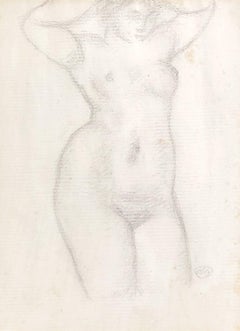Missouri - Figurative Drawings and Watercolors
to
15
41
28
24
13
15
Overall Width
to
Overall Height
to
5
54
62
2
2
1
1
1
1
3
1
3
33
14
5
4
79
37
5
104
62
56
41
41
29
18
17
10
10
8
7
4
3
3
3
2
2
2
2
51
40
36
35
27
5
3
3
2
2
23
12
7,758
6,026
Item Ships From: Missouri
Torse de Femme
By Aristide Maillol
Located in Missouri, MO
Aristide Maillol
"Femme de Torse" 1930
Charcoal on Paper
Monogrammed Lower Right
with Photo Certificate of Authenticity
Paper Size: approx 12 x 8 7/8 inches
Framed Size: approx 15.25...
Category
1930s Realist Missouri - Figurative Drawings and Watercolors
Materials
Charcoal, Archival Paper
Price Upon Request
